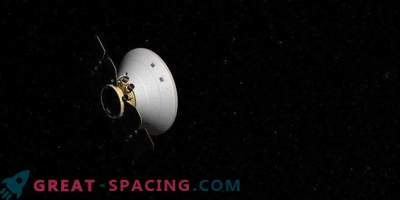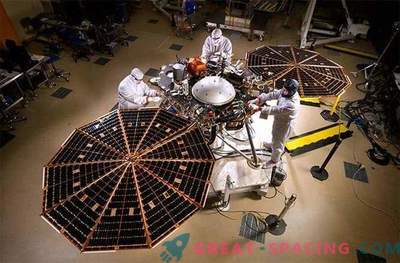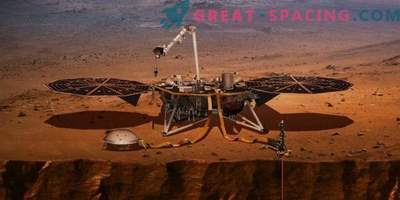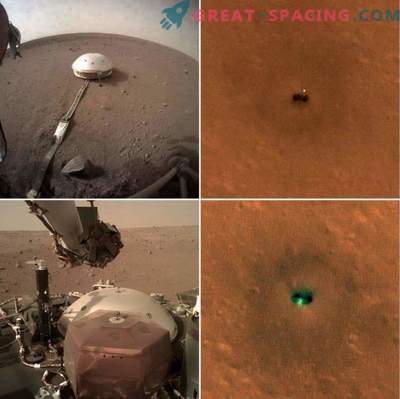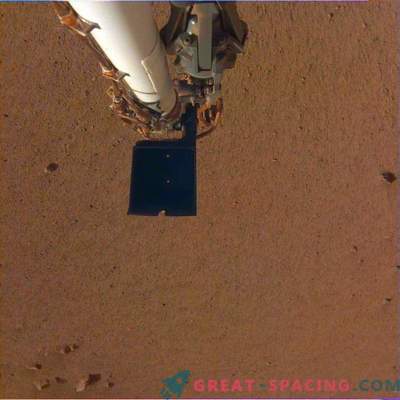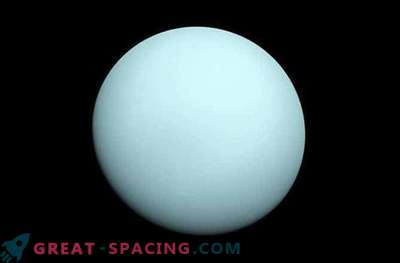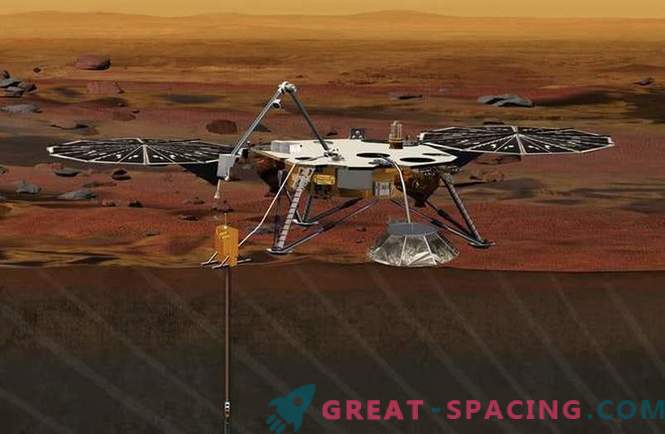
Apart from a small number of Martian meteorites collected on Earth, some gravity data from spacecraft and other bits of information, our knowledge of what is inside the planet is very small. This was stated by Bruce Benerdt, the principal investigator of the new descent module called InSigth at the NASA Jet Propulsion Laboratory in California. But the situation may change.
Insight (the name stands for “exploration of the depths using seismic data, geodesy and heat transfer”) will be launched to Mars in March for a short 6-month journey to the Red Planet. Arriving at the Martian equator, the spacecraft will drill a small hole to take a sample of the inner layers of the planet, and the seismograph will measure any possible "marshokes".
"Mars is a really good laboratory, thanks to which it is possible to understand how the planets are formed into holistic objects, which they are," said Benerdt. "Because the absence of tectonic plates means that the early layers were not immersed inside the planet (unlike Earth). In addition, Mars is large enough to have a complex internal composition with the core and mantle, unlike the Moon adjacent to the Earth" .
Over the past two months, engineers have been testing InSight quality at the Lockheed Martin plant in Colorado. The company says that so far everything is going well. The contractor has many years of experience working with NASA and helps control two spacecraft, the Mars Odyssey and the Mars Reconnaissance Orbiter, that will deliver information from Insight to orbit and further to Earth. The MRO recently changed its position in orbit to help InSight land.
Testing consists of two phases - launch and flight to Mars, and then a comprehensive check of the start and landing. Fortunately for InSight, a similar system was tested earlier when the Phoenix descent vehicle landed safely on the surface in August 2007. But there are still a number of stages that need to be worked out. This includes the separation of the descent vehicle from the transporting shield and the safe deployment of the InSight to the "legs" so that it does not waste energy while on the surface.
"After we land, the next critical event will be the deployment of solar cells," said Stu Spat, program manager at Lockheed Martin Space Systems, Discovery News. - "They will be deployed in a virtually circular pattern to collect solar energy for power. Then we will test the most important components and conduct a communications test to maintain a stable exchange of data (with the Earth)."
The first 80 sol (Martian days) work will be very stressful. In the first 40 sol, InSight will test their systems and place a seismograph on the surface. Then comes the stage of drilling. The machine will slowly immerse the drill in the soil to a depth of half a meter at a time. The researchers then spend a few days sending heat pulses to see how the environment around the drill reacts. The mission goal is to dive at least 3-5 meters.
It is known that the astronauts of the Apollo space program were hardly able to take samples from the depths of the moon, because the dust was incredibly densely rammed. But the team InSight does not expect a similar situation on Mars. "The wind and other processes deeply mix the ground, so it is not as monolithic as on the moon," said Benerdt, "and there are some dust density measurements taken by Spirit and Curiosity." Scientists have also conducted numerous tests of drills with similar soils at the Jet Propulsion Laboratory and at other sites. Insight will land during the Martian fall and is expected to stay there one Martian year, which is about two years on our planet. Improved insulation and a large solar cell are supposed to keep the spacecraft safe and in working condition during the winter. Unlike rovers, a spacecraft just needs to stay in place and collect data, so it requires less energy.
"We hope," said Benerdt, "to fix from 20 to 100" marshmallaches "during the Martian year, to learn more about the internal composition and the map of the internal borders of the planet." "The mission can last even longer if the components are sustained and funding continues," he added.

